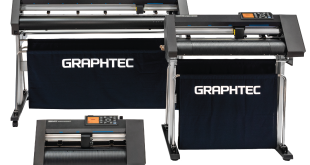 In this insightful article, Paul Willems, director of business development and product management EMEA at Roland DG, outlines just how decorators can respond to the garment printing sector’s need for speed.
In this insightful article, Paul Willems, director of business development and product management EMEA at Roland DG, outlines just how decorators can respond to the garment printing sector’s need for speed.
The rise of e-commerce platforms like Amazon over the course of the pandemic has dramatically shifted consumer expectations when it comes to delivery times for online orders.
Amazon recently announced that its Prime service, offering next-day – sometimes even same-day – delivery on millions of items available on the platform now has over 200 million subscribers worldwide.
This shows the increasing demand for new purchases to go from warehouse to doorstep within a few days at most, regardless of the complexity involved in creating and shipping them.
For the garment printing sector, this new sense of urgency within the supply chain has presented a number of new operational challenges, particularly since, like many industries, it has had to adapt to several other pressures since the outset of the pandemic.
 Uncertainty around global fashion trends, along with the cancellation of major events all over the world means that print professionals are lacking the large bulk orders they have historically relied upon. As a result, short-run orders have been key during this period to help businesses stay afloat. But despite its profitability, the traditional workflow of short runs makes it difficult to ship items as quickly as customers and partners now expect.
Uncertainty around global fashion trends, along with the cancellation of major events all over the world means that print professionals are lacking the large bulk orders they have historically relied upon. As a result, short-run orders have been key during this period to help businesses stay afloat. But despite its profitability, the traditional workflow of short runs makes it difficult to ship items as quickly as customers and partners now expect.
Alongside this, the pandemic has accelerated changes in consumer preferences in the textile printing industry. A recent Roland DG study revealed that the UK market value for personalised gifts, including clothing, is expected to reach £1 billion in the next 12 months. While this opens doors to new commercial opportunities, adding personalisation options adds a layer of complexity to order fulfilment, and makes it difficult to achieve short delivery times.
Fortunately, garment printers can focus on a number of areas to improve their operational efficiency and meet new customer expectations.
Investing in new technology
Innovative print technologies like dye sublimation and direct to garment (DTG) have risen in popularity and efficiency over the past few years, both of which can significantly cut down print time for garment printing and personalisation, making short run orders more cost effective.
 The dye sublimation process works by vaporising the ink to penetrate the surface of man-made fibre, delivering stunning permanent colours that are embedded in the fabric, rather than being printed onto the fabric surface. As a result, this is the perfect technology for fashion and sports garments that may need to be washed multiple times as the images do not fade or crack.
The dye sublimation process works by vaporising the ink to penetrate the surface of man-made fibre, delivering stunning permanent colours that are embedded in the fabric, rather than being printed onto the fabric surface. As a result, this is the perfect technology for fashion and sports garments that may need to be washed multiple times as the images do not fade or crack.
DTG meanwhile uses ink to print directly onto the fabric. The process is extremely quick, and still produces high-quality results with low setup costs. As a result, this technology is ideal for situations in which fast turnaround is required.
Streamlining customer service
The most forward-thinking textile printing professionals are also beginning to explore ways to integrate software-as-a-service (SaaS) and automation tools like CRM systems and chatbots into their operations.
This allows businesses to streamline their customer service experience while still enabling employees to stay focused on production and other elements which are vital for maintaining operational efficiency during busy periods.
Improving workflows
Just as SaaS and CRM help to streamline processes for employees so does introducing online stores, personalised to your business but operated by a third party.
They have grown in popularity over the pandemic, not only due to the increased demand for e-commerce but also because they allow customers to customise and preview products themselves, enabling print shops to manage orders, process artwork and print jobs seamlessly via a single platform, without high website costs.
 Scaling staff
Scaling staff
The rise of the gig economy and flexible working during the pandemic means it’s never been easier to recruit talented individuals. This means businesses can prioritise dynamically scaling their workforces to service seasonal spikes or unexpected surges in demand without fear of high ongoing labour costs during quieter periods.
Rapidly changing consumer expectations has become part and parcel of today’s world. They will always be looking for the next big thing and brands will always have to react or risk being left behind. As a result, subtle changes to production, customer service and resourcing now will help businesses to thrive and maintain customer loyalty in this new modern marketplace – where the need for speed is key.
 Printwear & Promotion The Total Promotional Package
Printwear & Promotion The Total Promotional Package




